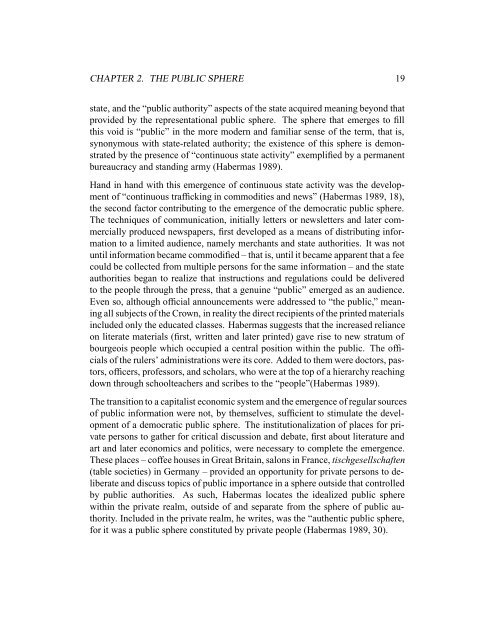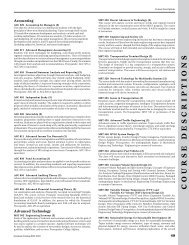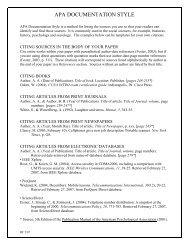Expanding the Public Sphere through Computer ... - ResearchGate
Expanding the Public Sphere through Computer ... - ResearchGate
Expanding the Public Sphere through Computer ... - ResearchGate
Create successful ePaper yourself
Turn your PDF publications into a flip-book with our unique Google optimized e-Paper software.
CHAPTER 2. THE PUBLIC SPHERE 19<br />
state, and <strong>the</strong> “public authority” aspects of <strong>the</strong> state acquired meaning beyond that<br />
provided by <strong>the</strong> representational public sphere. The sphere that emerges to fill<br />
this void is “public” in <strong>the</strong> more modern and familiar sense of <strong>the</strong> term, that is,<br />
synonymous with state-related authority; <strong>the</strong> existence of this sphere is demonstrated<br />
by <strong>the</strong> presence of “continuous state activity” exemplified by a permanent<br />
bureaucracy and standing army (Habermas 1989).<br />
Hand in hand with this emergence of continuous state activity was <strong>the</strong> development<br />
of “continuous trafficking in commodities and news” (Habermas 1989, 18),<br />
<strong>the</strong> second factor contributing to <strong>the</strong> emergence of <strong>the</strong> democratic public sphere.<br />
The techniques of communication, initially letters or newsletters and later commercially<br />
produced newspapers, first developed as a means of distributing information<br />
to a limited audience, namely merchants and state authorities. It was not<br />
until information became commodified – that is, until it became apparent that a fee<br />
could be collected from multiple persons for <strong>the</strong> same information – and <strong>the</strong> state<br />
authorities began to realize that instructions and regulations could be delivered<br />
to <strong>the</strong> people <strong>through</strong> <strong>the</strong> press, that a genuine “public” emerged as an audience.<br />
Even so, although official announcements were addressed to “<strong>the</strong> public,” meaning<br />
all subjects of <strong>the</strong> Crown, in reality <strong>the</strong> direct recipients of <strong>the</strong> printed materials<br />
included only <strong>the</strong> educated classes. Habermas suggests that <strong>the</strong> increased reliance<br />
on literate materials (first, written and later printed) gave rise to new stratum of<br />
bourgeois people which occupied a central position within <strong>the</strong> public. The officials<br />
of <strong>the</strong> rulers’ administrations were its core. Added to <strong>the</strong>m were doctors, pastors,<br />
officers, professors, and scholars, who were at <strong>the</strong> top of a hierarchy reaching<br />
down <strong>through</strong> schoolteachers and scribes to <strong>the</strong> “people”(Habermas 1989).<br />
The transition to a capitalist economic system and <strong>the</strong> emergence of regular sources<br />
of public information were not, by <strong>the</strong>mselves, sufficient to stimulate <strong>the</strong> development<br />
of a democratic public sphere. The institutionalization of places for private<br />
persons to ga<strong>the</strong>r for critical discussion and debate, first about literature and<br />
art and later economics and politics, were necessary to complete <strong>the</strong> emergence.<br />
These places – coffee houses in Great Britain, salons in France, tischgesellschaften<br />
(table societies) in Germany – provided an opportunity for private persons to deliberate<br />
and discuss topics of public importance in a sphere outside that controlled<br />
by public authorities. As such, Habermas locates <strong>the</strong> idealized public sphere<br />
within <strong>the</strong> private realm, outside of and separate from <strong>the</strong> sphere of public authority.<br />
Included in <strong>the</strong> private realm, he writes, was <strong>the</strong> “au<strong>the</strong>ntic public sphere,<br />
for it was a public sphere constituted by private people (Habermas 1989, 30).
















